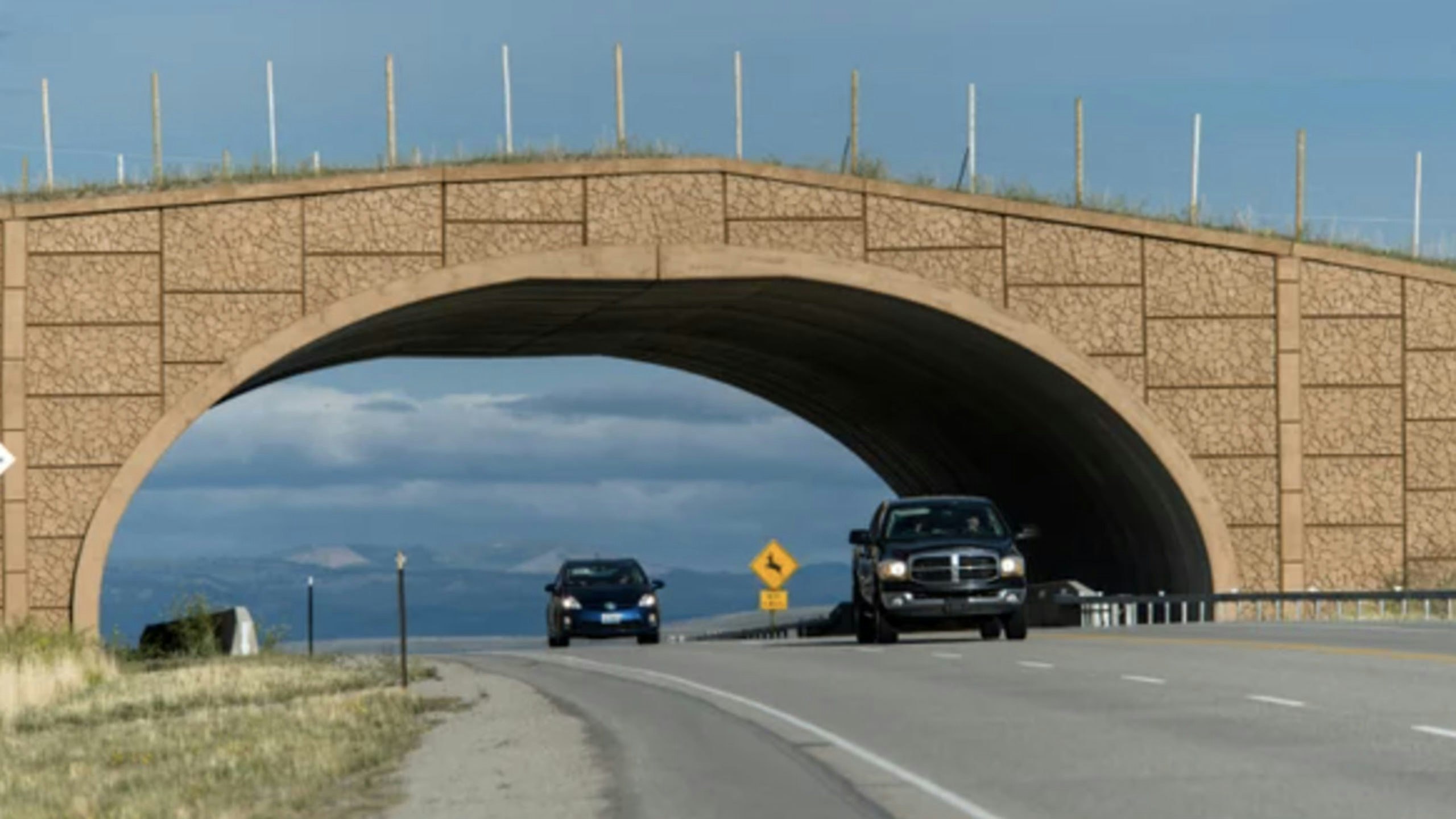By Mark Heinz, public lands and wildlife reporter
Mark@CowboyStateDaily.com
About 6,000 times a year, on average, somebody plows into a wild animal along the Cowboy State’s highways, according to the Wyoming Game and Fish Department.
That not only kills numerous animals, it threatens human safety and causes hundreds of thousands of dollars in damage to vehicles yearly, Game and Fish public information officer Sara DiRienzo told Cowboy State Daily.
“We all drive because we all need to get around Wyoming and we’ve all at least had some close calls, or know somebody who has,” she said.
To mitigate that, Game and Fish, the Wyoming Department of Transportation, private property owners and others are pitching in to make highways safer for people and animals alike. Some pending projects include overpasses or underpasses animals can use to cross roadways, as well as fencing designed to “funnel” the animals toward those crossing points, she said.
Mule Deer Most Frequently Hit
Roughly 80-85 percent of the collisions are with mule deer, a species already struggling with declining numbers across much of the West, she said. It’s probably because of the deer’s movement between summer and winter ranges, which are frequently split by roads and highways.
“For us, that’s way too many mule deer that are being hit on the road,” DiRienzo said.
Elk, moose, whitetail deer, pronghorn and bighorn sheep are among other large animals frequently hit, she said.
Big Projects Focused On Trouble Spots
In all, there are 240 projects, large and small, intended to mitigate wildlife collisions. They are all either ongoing or starting in the near future.
“There’s project in every community, all across Wyoming,” DiRienzo said, many of them small, such as improvements to roadside fences.
There are three major projects in the works along stretches of highway that are particularly notorious for wildlife collisions, she said.
The first is between mile posts 40 and 76 along U.S. Highway 287 near Dubois. It will involve three underpasses and one overpass, with fencing to funnel animals toward them, DiRienzo said.
Some initial work has been done there, but it’s not known when major construction will begin.
Along U.S. Highway 189 near Kemmerer, a pending project will improve fencing to funnel animals, mainly pronghorn, toward already-existing underpasses. That will be between mile posts 0 and 24, and a new wildlife overpass is also planned at mile post 24 DiRienzo said.
As many as 80 collisions per year with big game animals have been reported there, she said. And traffic is expected to increase with the construction of the proposed nuclear Naughton Power Plant, which is scheduled to go online in 2028.
“Some of those wildlife wreck numbers are slushy,” she said. “We can only report those incidents that are documented, and not everybody reports it when they hit an animal. We know that collisions overall are being under-documented.”
An overpass, and high fences designed to funnel animals toward it while keeping them from running into traffic, is planned along a particularly troublesome stretch of Interstate 80 between mile posts 247-256, near Arlington. There have frequently been more than 150 wildlife collisions per year documented there, DiRienzo said.
It’s not known when that project might start.
“We’re really only in the preliminary phases of this one for now,” DiRienzo said.
Raising Money
Highway funds and private donations have helped the cause, she said. Game and Fish also recently raised the price of conservation stamps – which all hunters and anglers are required to have – from $12.50 to $21.50. For every stamp purchased, $1.35 will go toward wildlife highway safety projects.
Proceeds from special “Wildlife Conservation” license plates will also help, she said.
“Those license plates have proven really popular,” she said. “At least 1,000 had to be sold to make them official and permanently available, and we’ve reached that goal.”





